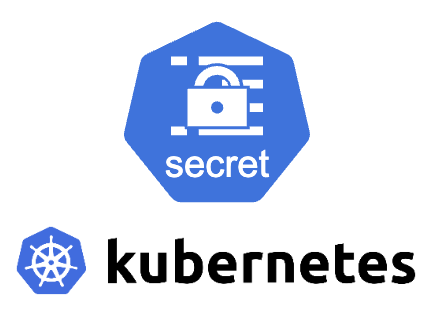Secret Management in Kubernetes

Managing secrets in a cloud-native environment like Kubernetes is a crucial aspect of maintaining the security and integrity of your applications. Secrets, in the context of Kubernetes, are sensitive pieces of data such as passwords, API keys, OAuth tokens, and TLS certificates. These secrets need to be securely managed, accessed, and used by your Kubernetes workloads.
In this article, we’ll explore the different types of Kubernetes Secrets, methods of using them in Pods, advanced external secret management systems, and best practices to ensure your secrets are handled securely.
Types of Kubernetes Secrets
Kubernetes provides several built-in secret types, each designed to handle different forms of sensitive data. These include:
- Opaque Secrets: The most generic secret type. You can store any type of sensitive data encoded in base64.
- docker-registry (dockercfg) Secrets: Used to authenticate against a Docker registry, typically for pulling container images from private repositories.
- TLS Secrets: Used to store TLS certificates and private keys.
Opaque Secrets
Imperative configuration
kubectl create secret generic postgres-secret \
--from-literal=username=admin \
--from-literal=password='S3cr3tPassw0rd' \
--namespace=secrets-demoThis command creates an Opaque Secret with a username and password. The values are base64-encoded by Kubernetes.
Declarative configuration
echo -n 'admin' | base64
# YWRtaW4=
echo -n 'S3cr3tP@ssw0rd' | base64
# UzNjcjN0UGFzc3cwcmQ=
# vi postgres-secret.yaml
apiVersion: v1
kind: Secret
metadata:
name: postgres-secret
namespace: secrets-demo
type: Opaque
data:
username: YWRtaW4=
password: UzNjcjN0UGFzc3cwcmQ=
kubectl create -f postgres-secret.yamlThe secret values are base64 encoded; they are obscured but not truly secret. Anyone who can read the Secret can easily decode the base64-encoded values.
kubectl get secret postgres-secret --namespace=secrets-demo --template=\{\{.data.username}} | base64 -d
kubectl get secret postgres-secret --namespace=secrets-demo --output jsonpath="{.data.password}" | base64 -dDocker Config Secret
kubectl create secret docker-registry private-registry-secret \
--docker-server=https://registry.local \
--docker-username=admin \
--docker-password=Passw0rd1234 \
--namespace=secrets-demoThis type of secret is used to provide authentication for Private Docker Registries.
TLS Secret
kubectl create secret tls demo-local-tls-secret \
--cert=./secrets-demo/demo-local-tls.crt \
--key=./secrets-demo/demo-local-tls.key \
--namespace=secrets-demoThis creates a TLS Secret from an existing certificate and private key.
Other secret type includes Service Account Token Secret, Basic authentication Secret, SSH authentication Secrets and Bootstrap token Secrets.
| NAME | type | data |
| Generic | Opaque | Key Value Pairs |
| Docker Config | kubernetes.io/dockerconfigjson | .dockerconfigjson |
| TLS | kubernetes.io/tls | tls.crttls.key |
| ServiceAccount | kubernetes.io/service-account-token | |
| Basic Authentication | kubernetes.io/basic-auth | usernamepassword |
| SSH Authentication | kubernetes.io/ssh-auth | ssh-privatekey |
| Bootstrap Token | bootstrap.kubernetes.io/token | token-idtoken-secret |
Using Secrets in Pods
Kubernetes allows you to expose secrets to your applications in various ways. The most common methods are:
- Using Secrets as Environment Variables
- Using Secrets as Volume Mounts
Using Secrets as Environment Variables
Secrets can be injected into a container’s environment variables, which is useful for configuration settings like API keys or database credentials.
Syntax:
env:
- name: ENV_VAR_NAME
valueFrom:
secretKeyRef:
name: secret-name
key: key-nameExample:
apiVersion: v1
kind: Pod
metadata:
name: postgres
namespace: secrets-demo
labels:
app: postgres
spec:
containers:
- name: postgres
image: postgres
env:
- name: POSTGRES_USER
valueFrom:
secretKeyRef:
name: postgres-secret
key: username
- name: POSTGRES_PASSWORD
valueFrom:
secretKeyRef:
name: postgres-secret
key: passwordIn this example, the environment variables POSTGRES_USERNAME and POSTGRES_PASSWORD are populated with the values from the postgres-secret secret.
Validate:
kubectl exec postgres --namespace=secrets-demo -- env PGPASSWORD=S3cr3tPassw0rd psql admin -U admin -h localhost -p 5432 -c "\l"Using Secrets as Volume Mounts
Secrets can also be mounted as files into a container, which can be particularly useful for certificates or SSH keys.
Syntax:
containers:
volumeMounts:
- name: secret-volume-name
mountPath: /mount/path
readOnly: true
volumes:
- name: secret-volume-name
secret:
secretName: secret-nameExample:
apiVersion: v1
kind: Pod
metadata:
name: nginx
namespace: secrets-demo
spec:
containers:
- name: nginx
image: nginx
env:
- name: NGINX_TLS_CRT
value: /etc/nginx/ssl/tls.crt
- name: NGINX_TLS_KEY
value: /etc/nginx/ssl/tls.key
volumeMounts:
- name: nginx-certs
mountPath: /etc/nginx/ssl
readOnly: true
volumes:
- name: nginx-certs
secret:
secretName: demo-local-tls-secretHere, the secret is mounted at /etc/secret-volume inside the container as files, where each secret key is represented as a file in that directory.
Validate:
kubectl exec nginx --namespace=secrets-demo -- cat /etc/nginx/ssl/tls.crt
kubectl exec nginx --namespace=secrets-demo -- cat /etc/nginx/ssl/tls.key
kubectl exec nginx --namespace=secrets-demo -- printenv
kubectl exec nginx --namespace=secrets-demo -- sh -c 'echo $NGINX_TLS_CRT'Passing Secrets to Container Command Arguments
You can directly pass secrets as arguments to the container's command, which might be required by certain command-line tools or scripts.
In this example, the secret value POSTGRES_PASSWORD is passed directly to the container’s command.
Syntax:
env:
- name: DEMO_PASSWORD
valueFrom:
secretKeyRef:
name: secret-name
key: password
command: ["--password", ":$(DEMO_PASSWORD)"]Example:
apiVersion: v1
kind: Pod
metadata:
name: mlflow
namespace: secrets-demo
spec:
imagePullSecrets:
- name: private-registry-secret
containers:
- name: mlflow
image: registry.local/mlflow:v1
env:
- name: POSTGRES_USER
valueFrom:
secretKeyRef:
name: postgres-secret
key: username
- name: POSTGRES_PASSWORD
valueFrom:
secretKeyRef:
name: postgres-secret
key: password
- name: POSTGRES_DATABASE
value: admin
command: ["mlflow", "server", "--backend-store-uri", "postgresql+psycopg2://$(POSTGRES_USER):$(POSTGRES_PASSWORD)@postgres-service:5432/$(POSTGRES_DATABASE)"]Rotating secrets in Kubernetes is essential for maintaining the security of your application by ensuring that sensitive information like credentials and keys remains protected. Kubernetes simplifies the process by allowing secret updates without causing downtime. The first step is to update the secret with new values, followed by redeploying the pods that rely on the secret. This can be done by either manually deleting the pods or updating the deployment, ensuring that the pods restart and pick up the updated secret values, enhancing the security of your system.
While Kubernetes secrets are base64-encoded, they are still stored in etcd (the underlying data store) in plaintext. For enhanced security and flexibility, integrate with external secret management systems like HashiCorp Vault (Vault Secrets Operator), AWS Secrets Manager (External Secrets Operator) or use Bitnami's Sealed Secrets Operator. (Followup article)
Secret management in Kubernetes is a critical aspect of maintaining application security. By understanding the different types of Kubernetes secrets, learning how to use them effectively, and implementing best practices like external secret managers, Sealed Secrets, and proper RBAC, you can securely manage and use secrets in your Kubernetes environments.
Following these guidelines will ensure that sensitive data remains secure, reducing the risk of exposure in dynamic and complex cloud-native environments.

